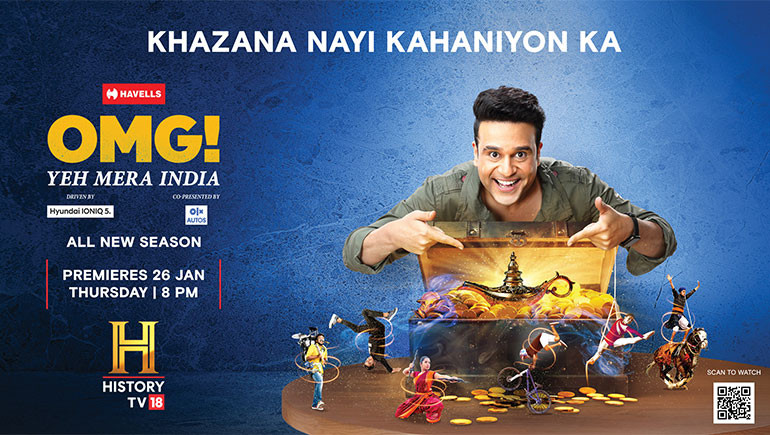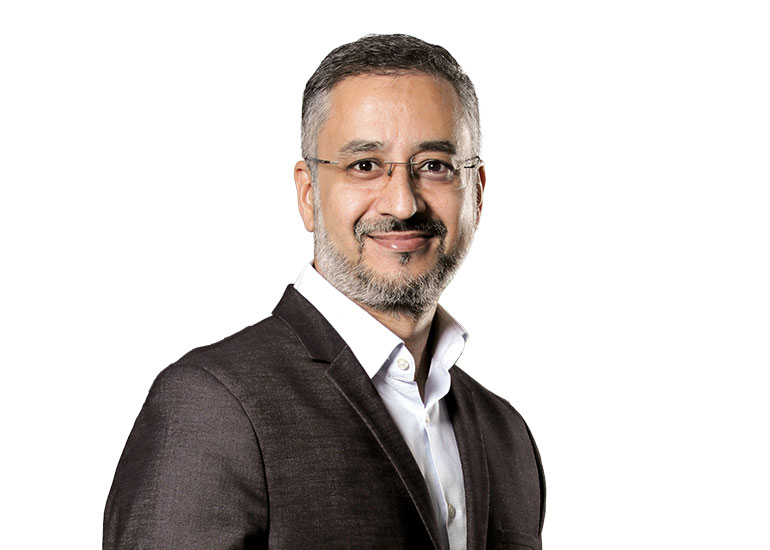Q] How does the whole scenario in terms of ratings look for the news cluster of TV18 now?
For TV18, all our Hindi channels are number one, including News18 India. We are number 1 in all the English channels, both CNBC and CNN News18 are number one. We have tremendous work going on in the regional languages, Marathi, Bengali, Kannada, and Tamil. In Gujarati, we are number two, while in Tamil, we are almost number three. We have improved significantly over the last year or so on all the channels that we have. If you were to compare us at an overall basis, we have the highest amount of reach compared to any other news network in the country.
 Q] BARC claimed that they have resumed ratings after developing the Augmented Data Reporting Standards for news and special interest genres. Do you think this has led to establishing a fool proof measurement rating system now?
Q] BARC claimed that they have resumed ratings after developing the Augmented Data Reporting Standards for news and special interest genres. Do you think this has led to establishing a fool proof measurement rating system now?
There is nothing known as fool proof. There aren’t enough meters in India to measure everybody’s TV viewership. For a 130-crore population, there are 55,000 meters, and that will never be able to do justice. Do we have 10 lakh meters to measure viewership? The answer is that it costs a lot of money. I think for the amount of money that the industry has invested, we have a brilliant system, and I have no complaints about the system because there is only so much that the system can do. What else will you expect it to do? If we had 50 lakh boxes, I can still understand, but we don’t have those numbers. It is far better than having nothing. So, it is a directional measurement rather than an absolute measurement. For example, IRS is also a directional measurement, as they interview 3 lakh people to derive a study report. No one can expect research to be of a certain standard, which can measure minute-by-minute viewership of Indian households, it is not possible to have a measurement report with absolute numbers.
Q] We first saw NDTV exiting from BARC and then iTV Network and Zee Media did the same. Do you think that the measurement system really matters to advertisers right now?
Advertisers want to put money where the measurement is, because they would at least know how many people saw it, and how many didn’t. So, to that extent, it is critical. If you don’t have measurement, people won’t trust you with your numbers. Also, what would be the motivation for you to create content if nobody is watching you? Measurement system is not only meant for advertisers, but also for the content that the channel produces. In the absence of measurement system, how would an editorial team know that they are doing well? How would they know if their content is being watched or not watched? If channels exit from the measurement system, then they will not know what people are watching on television.
Q] We recently witnessed the takeover of NDTV by the Adani group. How are you looking at this development?
There is nothing to look at. I was associated with NDTV for eight years. It is a consolidation that has to happen because news is not a business that can run at a very frugal budget. The channel has to run and continue its operations, and investments will happen. I think it is always good to have competition that is strong and agile. I don’t see it in any negative form.
Q] Today, news channels are accused of aligning themselves with political parties. Do you think journalism has taken a backseat while news channels continue to polarize news pieces and prime time debates?
That is a subjective opinion of individuals. Finally, you have to understand that if people don’t want to watch you, then they won’t watch you. No matter what an editor wants to broadcast as content, the power is always with the consumer. The consumer has the remote in his hand, and can always flip the channel. A news channel can go shouting all day long, and can get aligned or not with anybody, but if the consumer doesn’t want to watch, then it does not stand a chance. If today we are number one, it means that somebody is switching on the remote and watching Network18 channels. Nobody is forcing anybody to watch certain channels. In Bollywood, there is an audience for Govinda and on the other hand there is an audience for Aamir Khan, both are unique in their own way. Choice is with the consumers – if they want to go and watch Aamir Khan’s film then they will watch it in the theatres, those who don’t like him will not.
Q] There was a lot of buzz about landing pages being used to boost BARC ratings. How do you look at the use of landing pages in the news business now?
How does it even matter? If one goes to a shop and sees a product, do you ask, how the product reached that shop? What matters is the product. More importantly, no one is forcing someone to watch a certain channel, nobody has put a gun on the consumer’s head to forcefully make that person watch a channel. As marketers, our job is to make sure that we make the content available for the audience, and then it is up to the judgement of the viewer whether to watch it or not. Again, if the viewer does not like what they see, they will flip the channel, and it will not even register in the BARC system.
Q] Looking at the year ahead, what is the market sentiment for TV advertisements?
As long as there are people on earth, there will be advertisers, and as long as there are product manufacturers, they will need to advertise. Advertisers can stay back for a couple of months, but finally they will have to return. If they didn’t advertise during COVID, then they advertised post COVID. There is a funding winter right now, things might be tough, but as long as people are consuming, advertisers will continue to spend money on advertising. This is why even platforms like Netflix eventually have to turn to advertising to make sure that they’re able to sustain their business.
Q] But do you think that we will see a rise in the AdEx for news genre on TV?
Of course, we will. If you look at Print, it has three lakh active advertisers in a year. Digital has about 40-50,000 advertisers a year, while television only has 15,000 advertisers a year. So, we have a long way to go, and I am always bullish about the future of advertising in India.

Q] HistoryTV18 is coming out with the ninth season of OMG! Yeh Mera India. How is the response from the audience, and what are your expectations from this season?
The expectation of the channel doesn’t vary from season to season. For us, OMG! Yeh Mera India is a product of passion. It was an idea that was meant to inspire Indians, and we just wish that we could produce all thousand episodes in one shot, but we can’t, and so we have broken it into seasons. The very fact that we are in the ninth season tells you that it is a success. It is our flagship programme, and the number one show for History TV18. The show has received 10 billion impressions on Digital, 2 billion video views on all video assets for about 320 stories that we have broadcasted. OMG! Yeh Mera India is the number one home-grown show in the factual entertainment space, which has grown up to nine seasons. If we compare it with shows on National Geographic or Discovery in the factual entertainment space, we can see that they have international shows like Science of Stupid with Indian anchors.
Q] We have seen your rivals Discovery and TV9 entering into the OTT space. Why has History TV18 or TV18 as a news cluster not entered the OTT space as of now?
To me as a news person, OTT is more of an entertainment space, while news has to be live. So, to make news OTT doesn’t make any sense. The days of walled gardens are over. Today, people remember stories, and may not remember where they saw it because people don’t remember brands. It doesn’t really matter whether or not we have an OTT of our own. For example, 7-8 seasons of OMG! Yeh Mera India are available on Discovery+ as we don’t mind our content getting discovered on other platforms. The platform doesn’t matter to us, as people recognise OMG! Yeh Mera India very well.
Q] Production of documentaries and shows like OMG! Yeh Mera India is a costly affair in the infotainment space, unlike TV soaps that in comparison have low production cost. How much revenue do infotainment channels contribute to the growth of Network18?
For Network18, revenue of factual entertainment is not a very big number, but it is still significant enough to make the investment on its own. The channel has been profitable for quite a few years now, and it continues to be so. So, our business objectives and content related to it are being achieved. We have been delivering seasons of OMG! Yeh Mera India even during COVID. As long as we have a commitment to our audiences, we will bring the show, and it will have inspirational stories that matters the most. If you talk about the revenue proportion compared to news channels, there are 21 of them. History TV18 has two channels, one is HD and the other SD. So, we cannot really compare both genres, but it is doing fairly well and is profitable. We will keep investing in what we are doing every year.























